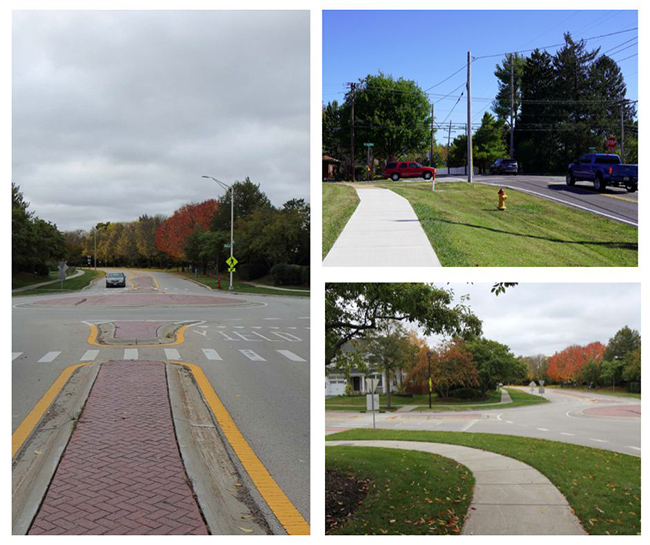The. St. Louis County Department of Transportation is proposing a roundabout at the Yaeger-Milburn intersection in Oakville, but not all area residents are on board with the idea.
The project, AR-1860, would turn the four-way intersection into a one-lane roundabout. Work would include the installation of ADA-complaint curb ramps and sidewalks, as well as a sidewalk extension that will connect Yaeger Circle Drive to Milburn Road. The county targeted the intersection because it’s in the county’s list of “top 10 intersection safety needs” said transportation official Joe Kulessa at an open house about the project at Oakville High School Nov. 15.
“It doesn’t mean that it’s the most crashes at this intersection. What it means is that for the number of vehicles that use it, there’s a much higher percentage of crashes than we would expect for this type of intersection,” Kulessa said.
Between 2017 and 2020, there were 48 accidents at the intersection, 10 with injuries. Since it’s near Oakville High School and Oakville Elementary, the intersection also gets congested during peak school traffic hours.
The project was the first of the 10 on the county’s list to receive funding. The project’s price tag – about $2.269 million – will in part be covered by a $1.609 million federal grant specifically for mitigating traffic congestion. According to data from the county, roundabouts reduce traffic jams by 75%. Based on the results from a 2018 study, the Insurance Institute for Highway Safety estimates that converting 10% of the signalized intersections in the U.S. to roundabouts would have reduced vehicle delays by more than 981 million hours and fuel consumption by more than 654 million gallons.
“The roundabout design is closely … linked to congestion,” Kulessa said. “Enhanced stop signs would not allow us to use these same funds.”
Nationwide there has been a trend toward installing more active traffic calming measures rather than passive measures. Active measures force drivers to slow down and look where they need to look. A stop sign – a passive measure – depends on the driver to pay attention to it, while a roundabout forces drivers to slow down to make the roundabout.
“The driver expectation anywhere else in the intersection is always the same. You always go, you’re looking in one direction,” he said. “At a traditional intersection, a pedestrian … walking up, the driver … maybe they see the pedestrian, maybe they don’t. The roundabout, the driver is always looking in the direction of the pedestrian and the pedestrian always knows where the driver is coming from.”
Right now, other pedestrian features of the project include crosswalks and lighting. Additional potential safety measures could be raised crosswalks or ‘rapid rectangular flashing beacons’ or a combination of both.
However, not all Oakville residents are convinced that a roundabout is the solution. Douglas Brunkhorst, who lives near the intersection, said that he would “do everything” he could “to protest.”
“We’ll stand out on that intersection and do that,” Brunkhorst said. “What you heard here tonight, I didn’t hear anybody speak for it.”
Other comments expressed concerns about navigating the roundabout, or that it would actually lead to an increase in accidents rather than mitigate them.
The project is not necessarily set in stone. The county is planning to use the feedback from the open house, as well as from a virtual meeting held the next night, to further refine the project’s scope of work. If it doesn’t move forward, the county will have to release the grant money since it is specifically to be used for a roundabout at that intersection.
“We really felt that this was a design that improved safety the most for all modes of transportation at this intersection. That’s what drove this project,” Kulessa said. “If we don’t move forward, it’s still a top 10 safety need. It’s still on the list, we’re still going to be looking for money, to look for alternate ideas.”
If the project does proceed, property acquisition is expected to take place in late 2024-2025. Kulessa said there will not be any eminent domain involved with the project. Bidding would occur in spring 2026, with construction to start in 2027.



